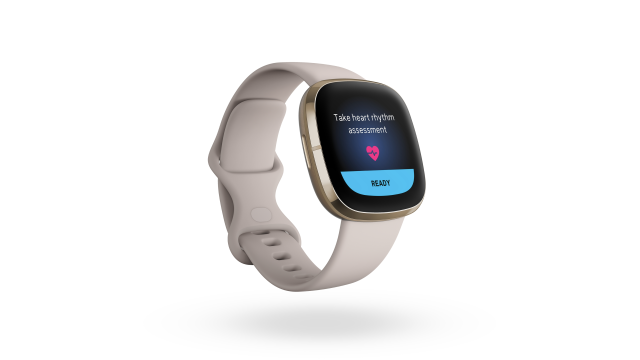With the latest update, the Fitbit Sense watch can now give you an electrocardiogram (ECG/EKG) reading. This is similar to the FDA-approved feature that the Apple Watch launched in 2018, and the caveats are roughly the same.
What does an ECG do?
An electrocardiogram is a test that measures your heartbeat. Unlike the simpler heart rate feature, which just tells you how fast your heart is beating, an ECG can detect in more detail what the electrical activity associated with your heartbeat looks like.
In a hospital, this would be done with electrode patches on your chest, arms and legs. The feature built into the Fitbit Sense or other smartwatches is a simpler version, but it can still provide similar information. Most importantly, it can detect if you are in atrial fibrillation, a state in which your heart beats irregularly. Atrial fibrillation, which doctors often abbreviate to “Afib,” can lead to blood clots and stroke because blood is not flowing properly.
[referenced id=”854726″ url=”https://www.lifehacker.com.au/2018/09/what-to-know-about-the-ecg-feature-in-the-new-apple-watch/” thumb=”https://www.gizmodo.com.au/wp-content/uploads/sites/4/2018/09/15/r345trzuydtdwwuqu0hh-300×168.jpg” title=”What To Know About The ECG Feature In The New Apple Watch” excerpt=”The new $US599 ($831)-and-up Apple Watch will be able to measure the electrical activity of your heart, its groundbreaking ECG or EKG feature. (Both acronyms stand for “electrocardiogram.”) But there are some important caveats.”]
How useful is the ECG on a smartwatch?
If you think you may be having a heart attack, forget about what your watch is telling you and call 911.
The watch doesn’t take ECGs continually, the way it measures your heart rate. Instead, you have to tell it you’re ready to take an ECG, at which point the Fitbit will ask you to place your fingers on the corners of the watch. It will then tell you if it detected a normal rhythm or an abnormal one, or if it was unable to get a good reading.
A watch’s ECG feature is no substitute for being evaluated by a doctor. Studies have shown that a watch can pick up at least some Afib, but there is also research showing that they miss a lot, too. Fitbit says that their FDA approval for the feature was based on studies that showed it detected 98.7% of Afib cases and 100% of normal heart rhythms
The idea of this feature is that if you do detect atrial fibrillation with the watch, you can get in touch with your doctor and make plans for more detailed testing to figure out what, if anything, is wrong with you. In the app, you can download a PDF version of your results to share when you do. In theory, if this feature detects atrial fibrillation you didn’t know you had, it could save your life.

Leave a Reply
You must be logged in to post a comment.